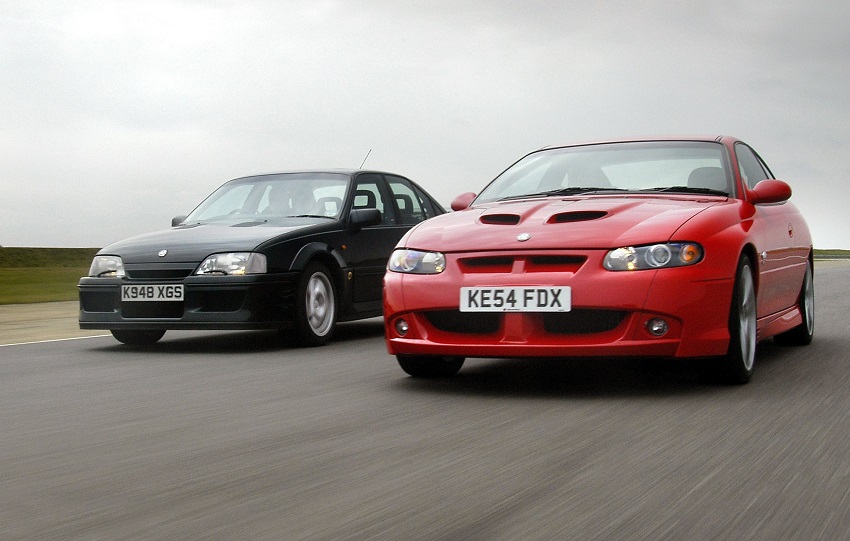It’s not a brand which many people associate with speed, but the Griffin badge has been brandished on plenty of sporty cars over the years, so we’ve compiled the best in our top 10 greatest Vauxhalls.
It’s been a while since Vauxhall has been able to offer anything even vaguely sporty, but that looks set to change thanks to its new GSe performance division.
So, to mark the debut of the new Vauxhall Astra GSe, we decided look back and choose our favourite fast Vauxhalls from yesteryear.
Top 10 Greatest Vauxhalls
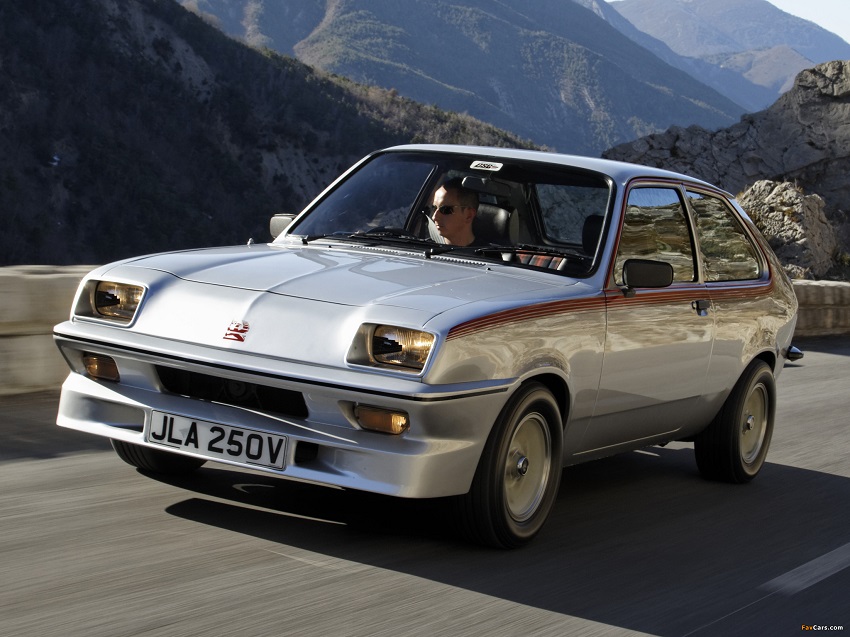
Greatest Vauxhalls: Chevette HS
Let’s start right at the beginning with this, the Chevette HS. Launched in 1975, the regular Chevette was quite an important car – not just for Vauxhall, but for the way car design would evolve around the world.
Nowadays, platform sharing (the process of different brands sharing core chassis components) is rife. The Volkswagen-Audi Group are perhaps the most common culprits, but nearly every modern marque tends to share platforms with other ‘sister brands’. Back in the 1970s though, the concept was pretty novel. In fact, General Motors’ ‘T-Platform’, upon which the Chevette was built, was one of the first examples of such an idea.
That’s not why we’re interested in the Chevette though. Instead, we remember it fondly for spawning one of the earliest hot hatches ever built. The Chevette HS was a homologation special designed to go rallying, and it was pretty good too – winning the British championship in 1979.
As a road car, sure, it was a bit rough around the edges, but with a 2.3-litre 16-valve engine and rear-wheel drive, it was certainly playful. A fun car in its day, the HS – complete with its staple silver and red livery – is now a bona fide (and perhaps underappreciated) classic.
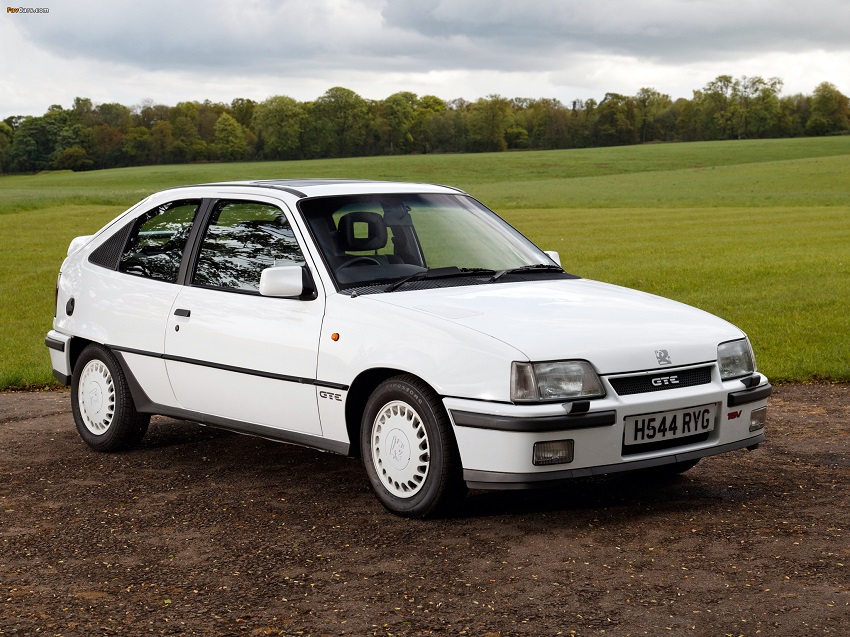
Greatest Vauxhalls: Astra GTE Mk2 16v
The Chevette hatchback would eventually be replaced by the Opel Kadett-derived Vauxhall Astra. The first-gen Astra saw the arrival of a new GTE variant which, although much more toned down compared to the competition-ready HS, added a sporting twist to the Astra recipe.
The GTE model returned for the second iteration of Astra too, and after some initially underwhelming powertrain options, Vauxhall struck gold in 1988. That year, they decided to put the 2.0-litre 16v ‘red-top’ engine into the GTE, which boosted power to 154hp. As a result, the Astra made headlines as one of the most powerful cars in its class. Performance-wise, that meant it could reach 60mph in just 7 seconds, which is quick even by today’s standards.
On the track it was pretty impressive too – good enough to help John Cleland on the way to his first British Touring Car Championship title.
In the car’s late years, the introduction of catalytic converters hampered the GTE somewhat, but regardless, this was a feistier car than its outward appearance might suggest. Some people criticised it for how raw it felt, but like the Chevette HS, that was part of the charm.
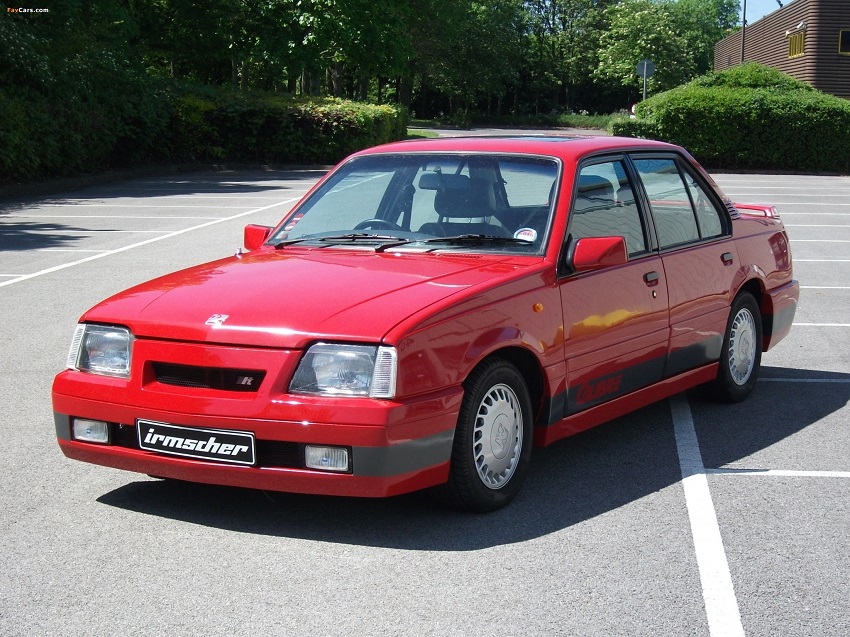
Greatest Vauxhalls: Cavalier Calibre
Vauxhall’s sporting history isn’t just made up of hot hatches though. In 1987, Vauxhall released this, the Cavalier Calibre sports saloon.
Based on a Mk2 Cavalier SRI 130, the Calibre had a 2.0-litre four-pot under the bonnet which produced around 130hp. This could propel the car to in excess of 120mph, meanwhile Irmscher-designed suspension ensured it felt good through the twisty stuff.
The German tuning house was also enlisted to equip the car with a fruity exhaust, and of course a body kit. Only 500 were ever built, so these days you’d be lucky to spot one.
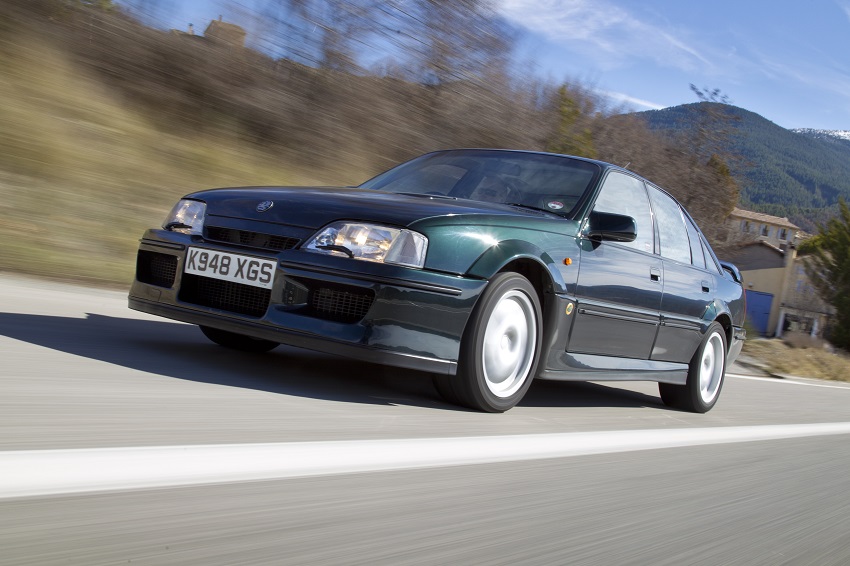
Greatest Vauxhalls: Lotus Carlton
When it comes to sporty Vauxhall saloons, there tends to be only one car on people’s minds, and it’s not the Cavalier Calibre. It’s this – the Lotus Carlton.
Iconic in ‘Imperial Green’, the Carlton is perhaps the ultimate sleeper car. To the uninitiated, it looks like any other early nineties Vauxhall Carlton, but under the bonnet, there’s something very special indeed.
The straight-six engine block can be traced back to the Opel Omega GSi, however the version found in this unhinged Carlton was thoroughly tuned by F1 & sportscar aficionados, Lotus. Its capacity was increased from 3.0 litres to 3.6, while a pair of turbochargers were also added into the equation. Naturally, this meant that an array of auxiliary modifications also had to be made by Lotus, otherwise the car would self-destruct as soon you even thought about the redline.
A Corvette-sourced 6-speed manual transmission and rear limited-slip diff completed the concoction, leaving you with a ‘90s Vauxhall Carlton that was capable of dealing with as much as 377hp. This meant that 60mph was achievable in just over 5 seconds, and it would keep accelerating until 180mph was within reach.
This tantalising combination of supercar speed and four-door practicality meant that, despite less than 1000 ever being produced, the car soon became notorious for use by criminal gangs. Most enthusiasts will have heard the story of the infamous ram raiders that used one to pull off lucrative heists in the UK, and who avoided capture thanks purely to the Carlton’s ability to leave the police in its dust.
In fact, the sheer speed of the car provoked an attack on it from the British tabloids, with the Daily Mail leading a charge to get the Carlton banned. As per usual though, that publication was spouting nonsense, and thankfully the petition never came to anything.
Thirty years later, the Lotus Carlton remains a prized possession, and is considered by many as perhaps the greatest Vauxhall model of all time.
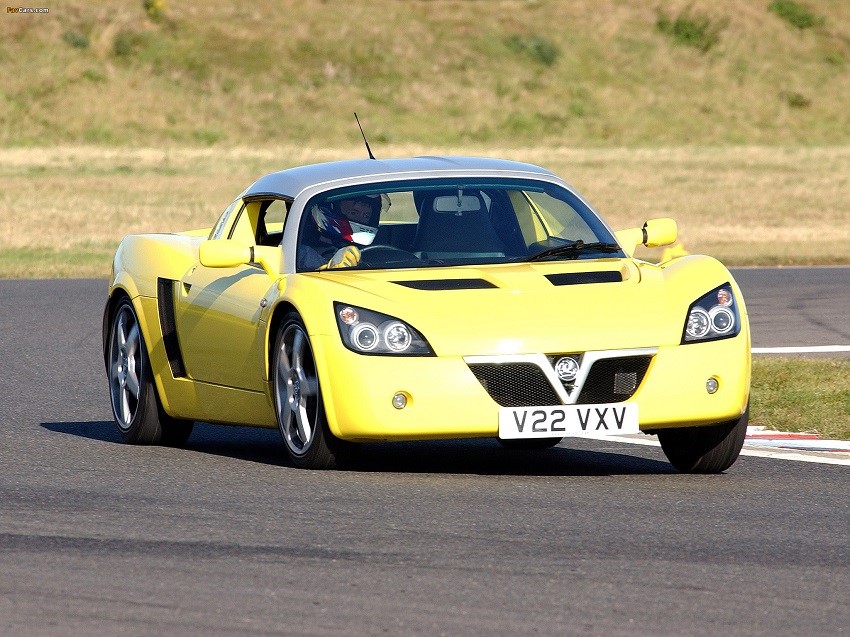
Greatest Vauxhalls: VX220
If you aren’t a fan of the Lotus Carlton for some strange reason, then the VX220 might be the strongest left-field challenger to the ‘greatest Vauxhall’ crown. Ironically though, this lightweight little roadster has plenty of Lotus DNA within it too.
At around the turn of the century, Lotus needed to start designing the second generation of its Elise, but predictably it was too strapped for cash to do so. That meant that it had to seek funding from elsewhere – namely, General Motors, who still owned Vauxhall at the time. In return for the money to design and develop their own new car, the deal stipulated that Lotus would also have to build Vauxhall and Opel derivatives on the same platform at its site in Hethel. Thus, the Opel Speedster and Vauxhall VX220 were born.
To our eyes at least, the VX220 is a very appealing thing to look at, and as any sports car should be, it’s even better to drive. Its 2.2-litre Ecotec engine may only produce 145hp, but in a car that weighs just 875kg, 145hp is more than enough to get the adrenaline pumping in most people. That figure didn’t suffice for everyone though, and so in 2004, a turbo was added to elevate power to around the 200hp-mark.
Sadly, you don’t see too many VX220s on the road, and so despite being one of the coolest vehicles to wear a Griffin badge, it’s edging closer and closer to ‘forgotten’ status. These truly are one of the hidden gems of the automotive world.
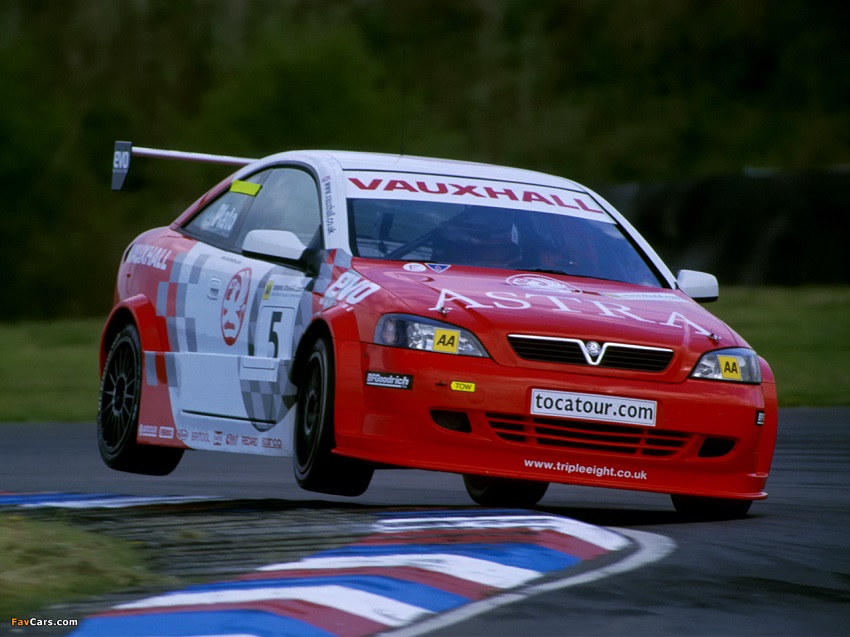
Greatest Vauxhalls: Astra Coupe BTC-T
Surprisingly, the VX220 wasn’t the only two-door, high-performance car amidst Vauxhall’s early noughties roster. There was also this: the Astra Coupe BTC-T racecar, a machine designed solely to dominate the British Touring Car Championship.
By any measure, this track-only special is one of the most successful cars to ever grace the UK’s premier motorsport championship. Between 2001-2004, the Astra Coupe took a clean sweep of the BTCC championship honours before being retired undefeated.
That initial 2001 season also provided us with one of the most fraught BTCC title fights in recent memory. However, instead of Vauxhall being at war with another manufacturer, the war was within their own camp. The closest thing that the Astra Coupe had to a competitor was Peugeot’s underdeveloped 406 Coupe, and that meant that it was a straight fight for victory between Vauxhall’s own two drivers – Yvan Muller and Jason Plato.
In the eyes of the team management, Muller was the number one driver within their squad, but a feisty Plato wasn’t having any of it. In the latter stages of the season, the rivalry grew into an all-out brawl, culminating in a barging match that spanned across the final three events of the year. In the end, it was Plato that walked away with the championship on a stormy evening at Brands Hatch, while Muller’s hopes literally went up in flames.
There was, of course, a roadgoing version of the Bertone-styled Astra Coupe too, albeit with much less performance at its disposal than the BTC-T. You can pick up a good one for just a few grand these days, and that makes them a great way to get into the world of sports cars on a super tight budget.
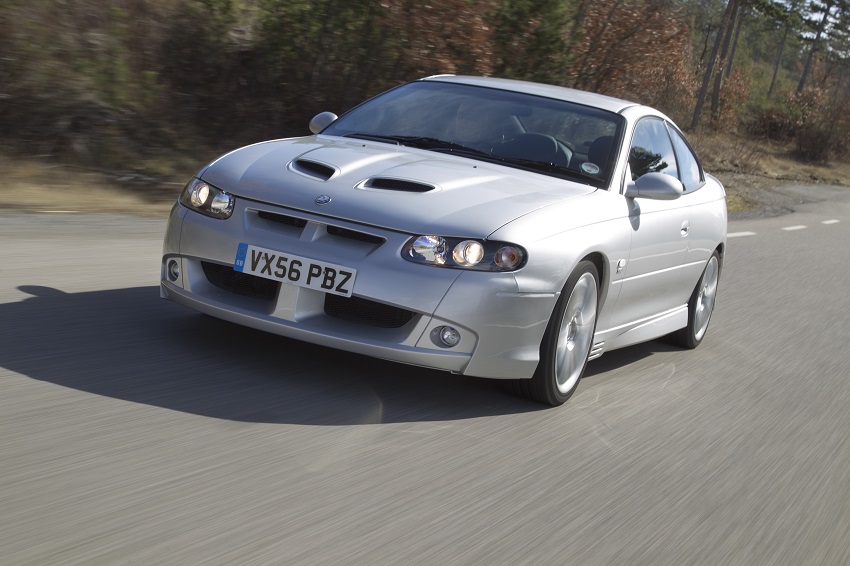
Greatest Vauxhalls: Monaro VXR 500
This Australian import may be a rebadged Holden at heart, but the VXR 500 is a little more special than your ‘average’ Aussie Monaro.
The standard car was certainly no slouch thanks to its Corvette-derived 6.0-litre V8, but UK dealer Greens managed to convince Vauxhall that they should sell a supercharged version of this modern-day muscle car, after proving that their bolt-on kit was reliable enough to come with a warranty.
With the addition of forced induction, power output now totalled 500hp, hence the name. In practice, that meant a 0-60mph time of just 4.8 seconds, compared to the standard Monaro VXR’s 5.2, while the top speed was somewhere beyond 180mph.
Bizarrely, whereas you’d expect the scarcer, more powerful VXR 500 to cost an arm and a leg, it was actually £1000 cheaper than the regular cars when new. Weird.
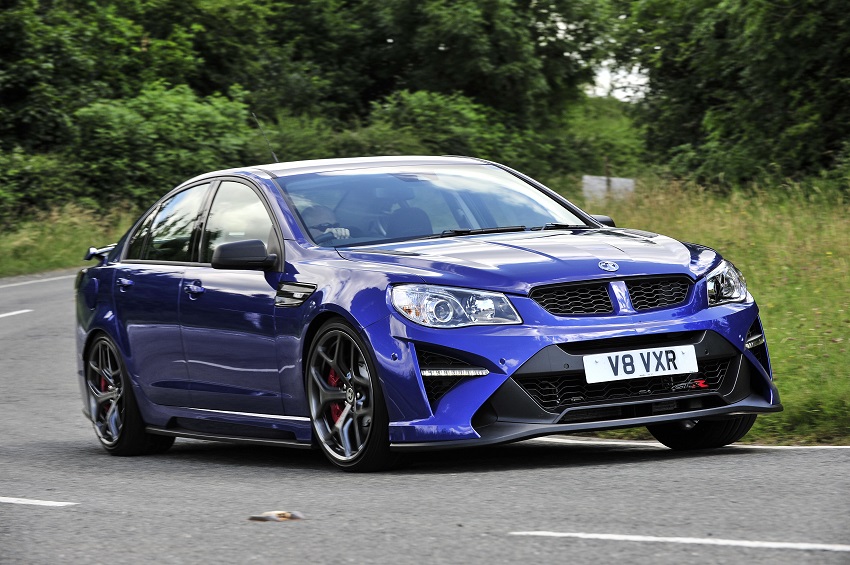
Greatest Vauxhalls: VXR8 GTS-R
After the Monaro, there was the VXR8. Another hot Holden imported to the UK and sold with a Vauxhall badge, the VXR8 arrived in 2007 with the same 6.0-litre N/A V8 as the old Monaro. However, as the years went by, this four-door saloon would become increasingly power-hungry.
First up, there was the 2009 Bathurst and Bathurst S editions, which bumped power up to 425hp and 552hp respectively; the Bathurst S gaining its extra oomph from a Walkinshaw-built supercharger.
Then, there was the GTS. Arriving in 2013, this version of the car came with a 6.2-litre LS V8 engine that you’d more typically find in a Camaro ZL1, equipping it with a mighty 577hp. However, the pinnacle of the Vauxhall VXR8 bloodline came four years later when the GTS-R was unveiled.
Costing an eye-watering £66,500, only 15 of Vauxhall’s most powerful road car were ever built. For the money, you got 587 ponies and a 0-60mph time of 4.2 seconds. It weighed 1880kg though, so was hardly the most agile car through the corners. Mind you, that was always to be expected.
Sadly, as the 2010s rolled on it became clear that Holden’s days were numbered, and alas, Vauxhall’s supply of muscle cars from down under dried up. It was fun while it lasted though.
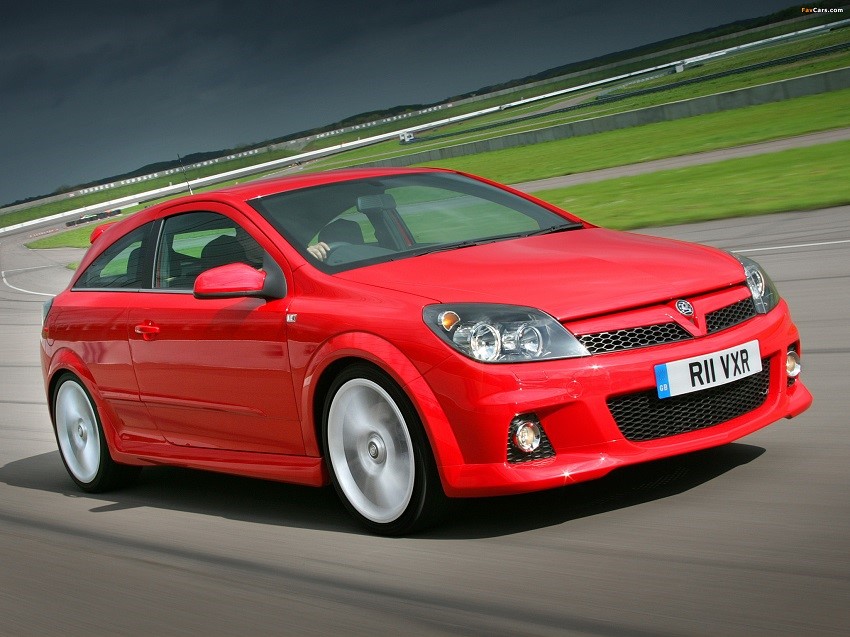
Greatest Vauxhalls: Astra H VXR
Looking back, Vauxhall’s mid-2000s era was actually a bit bonkers. Aside from the VX220 roadster and the imported Aussie V8s, the VXR treatment was being dished out to a multitude of unlikely victims.
The Zafira VXR MPV, for instance. If a car company built that thing in 2022, we’d think they’d gone mad – in fact, we probably did back then too. Don’t get me wrong, the fact that they gave a Meriva a bodykit and 178hp is very entertaining, but this scatter gun approach to performance cars didn’t always provide the best results.
Amidst it all, the Astra H VXR was probably the best of the lot. The standard Astra H was always a looker in three-door ‘Sport Hatch’ form anyway, so a more aggressive aero package gave it an attractive (albeit admittedly ‘boy racer’) appearance.
It was quick too. The Astra’s 2.0-litre turbo four-cylinder engine made 236hp and pushed it along to 62mph in just 6.2 seconds. If you were brave enough, the top speed wouldn’t be reached until you had passed 150mph. However, you would really need to be brave. These cars like to torque-steer, but if this shortlist has taught us anything, it’s that Vauxhall hot hatches tend to ultimately lack composure. They deliver on smiles though, so that’s the main thing.
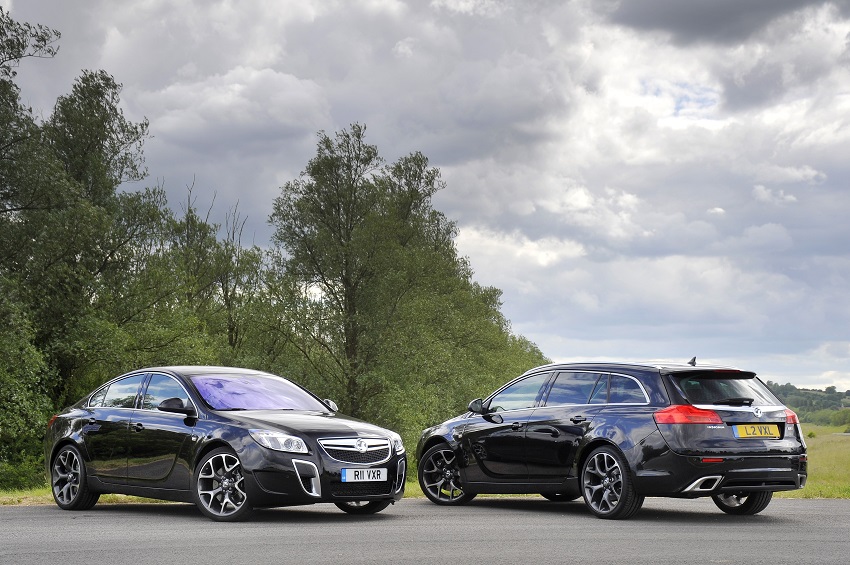
Greatest Vauxhalls: Insignia VXR
The barmy VXR era couldn’t live on forever unfortunately, and this was one of the last cars from that chapter of Vauxhall’s history.
Available as either a saloon or estate, the Insignia VXR was a more competent swansong than many people give it credit for. 321hp was complemented by a six-speed manual gearbox and all-wheel drive, all of which resulted in a 5.6-second 0-62mph time.
As standard, this unassuming V6 family car was limited to 155mph, but if you took that electronic restrictor away, you’d be hitting at least 170mph – in a family-sized Vauxhall!
In many aspects, the Insignia VXR could be seen as a modern incarnation of the brilliant Lotus Carlton, and so with that in mind, there wasn’t many better ways that the VXR brand could bow out.
Since the Insignia VXR, Vauxhall’s sporty offerings had dried up to nothing. However, with its new GSe performance brand getting up and running this week, the future is beginning to look much brighter for fans of the fast griffins.

